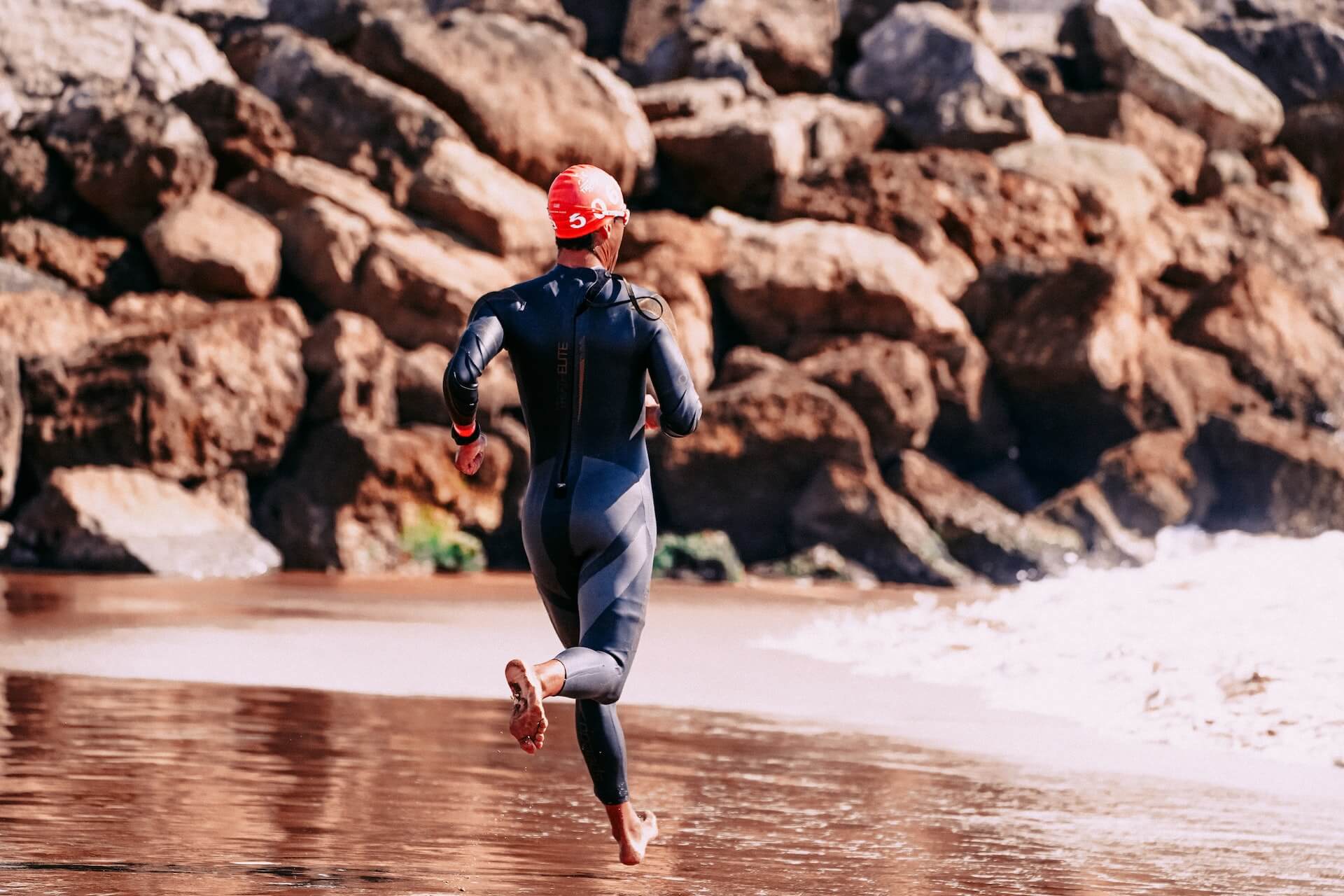Open water swimming is generally much colder than indoor swimming, and the temperature is constantly changing as well. For these reasons, you will need a wetsuit for open water swimming to keep you warm. However, there are so many wetsuit thicknesses, and it can be difficult to select the right one.

You can use a 3/2 wetsuit for water temperatures between 56°F and 65°F (13°C and 18°C). In colder water (45°F to 56°F or 7°C to 13°C), a 4/3 or 5/3 wetsuit is more suitable, while in warmer water (65°F to 75°F or 18°C to 24°C), a3/ 2mm wetsuit would suffice. Any warmer, and wetsuits become a detriment.
Keep reading to learn about wetsuit temperature recommendations and discover which thickness is best suited for your aquatic adventures.
Wetsuit Temperature Guide: Knowing When to Wear What
Understanding Wetsuit Thicknesses
When it comes to open water swimming, selecting the right wetsuit for the water temperature is essential. However, different water temperatures require different wetsuit thicknesses to maintain optimal warmth.
Wetsuits are generally identified by their thickness in millimeters, indicated by two or three numbers separated by slashes (e.g., 3/2 wetsuit). The first number refers to the thickness around your torso, while the second number is for your extremities. If there is a third number, it generally refers to an additional layer of insulation.
Seasonal Considerations
Your wetsuit selection should consider the seasonal variation in water temperatures. Let’s briefly discuss how your wetsuit choice can change depending on the season and location.
- Spring: In locations like the Mediterranean or North Carolina, spring water temperatures can range from 60°F to 70°F (15°C to 21°C). A 3/2 wetsuit is an ideal choice for these water temperatures.
- Summer: Warmer regions such as Hawaii and Brazil experience water temperatures between 75°F and 85°F (24°C and 29°C) during the summer months. In these conditions, a 2mm wetsuit or even a shorty wetsuit would be suitable.
- Fall: Fall brings cooler water temperatures to places like San Francisco and the Netherlands. With water temperatures ranging from 50°F to 65°F (10°C to 18°C), a 4/3 wetsuit is recommended to stay warm and avoid hypothermia.
- Winter: In colder areas like England and Greenland, winter water temperatures can drop as low as 32°F to 45°F (0°C to 7°C). For open water swimming in these conditions, a 5/4 or even 6/5 wetsuit is essential for protection against the cold.
By understanding the seasonal variations in different regions, you can make informed choices about the appropriate wetsuit thickness, ensuring a safe and enjoyable open water swim experience.
General Wetsuit Temperature Guide Recommendations
If the above seasonal temperature range doesn’t match up with your region, then consult with the table below to get some general guidelines about what wetsuit to wear at what temperature range:
| Water Temperature Range | Recommended Wetsuit Thickness | Comments |
| Below 50°F (10°C) | 5-6+mm | Very cold water, often deemed too cold for swimming. If swimming in such conditions, it’s advisable to wear a thermal-lined wetsuit, along with a thermal cap or hooded vest, neoprene gloves, and booties to prevent heat loss. |
| 50°F-65°F (10°C-18°C) | 3-5mm | Cold water that requires good insulation. A full wetsuit with a thickness of 3-5mm is recommended. Accessories like a hood, gloves, and booties may be necessary depending on personal tolerance to cold. |
| 65°F-78°F (18°C-25.5°C) | 2-3mm | Moderate water temperature that allows for longer duration swimming. A thinner wetsuit (2-3mm) is adequate for these conditions. Hoods, gloves, and booties are optional and dependent on individual comfort. |
| Above 78°F (25.5°C) | 0.5-2mm or No Wetsuit | Warm water that may not require a wetsuit. If preferred, a light wetsuit of 0.5-2mm or a swimsuit can be worn. It’s important to avoid overheating in such temperatures. |
Personal Factors Affecting Wetsuit Selection
Everyone is different, and your body type, metabolism, and cold sensitivity should play a role in your wetsuit choice.
For example, if you have a higher metabolism, your body might generate enough heat to keep you warm in colder water, allowing you to opt for a thinner wetsuit. On the other hand, if you are sensitive to cold, you may need a wetsuit with more insulation.
Your swimming speed and the duration of your swims also influence your decision. Faster swimmers generate more heat, while longer swims require more endurance and warmth.
Frequently Asked Questions
How long can you swim in cold water with a wetsuit on?
The duration of your swim in cold water while wearing a wetsuit greatly depends on the wetsuit’s thickness and your personal tolerance to cold. Thicker wetsuits provide better insulation for colder temperatures, but always listen to your body and take breaks or get out of the water if you start feeling too cold.
What’s the optimal water temperature for open water swimming without a wetsuit?
The optimal water temperature for open water swimming without a wetsuit varies based on personal preference, but generally, water temperatures above 78 degrees are comfortable for most swimmers. In fact, at those temperatures, wearing a wetsuit may put you at risk of overheating and premature fatigue, which can negatively impact your performance.
How do SUP and open cell wetsuits differ in temperature guides?
Stand-up Paddleboarding (SUP) wetsuits have a similar temperature guide to that of open water swimming wetsuits. Open-cell wetsuits, on the other hand, are generally used for diving and are designed to provide better insulation for colder water temperatures. These wetsuits have a softer and more flexible inner lining that adheres to the skin, trapping in heat more effectively. However, they may not be as durable as traditional wetsuits, so they might not be suitable for more rigorous activities like open water swimming or SUP.
Sources:

